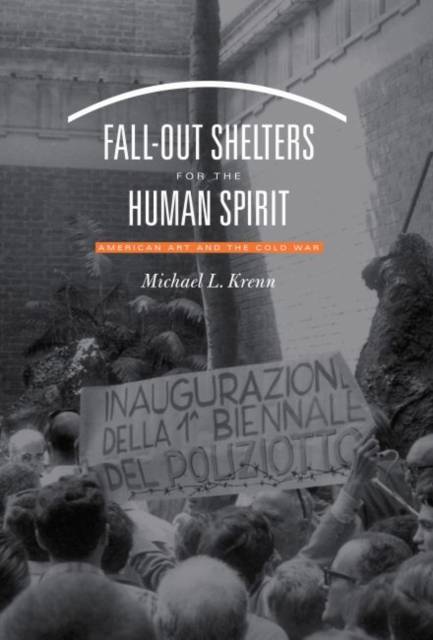
- Afhalen na 1 uur in een winkel met voorraad
- Gratis thuislevering in België vanaf € 30
- Ruim aanbod met 7 miljoen producten
- Afhalen na 1 uur in een winkel met voorraad
- Gratis thuislevering in België vanaf € 30
- Ruim aanbod met 7 miljoen producten
Zoeken
Fall-Out Shelters for the Human Spirit
American Art and the Cold War
Michael L Krenn
Paperback | Engels
€ 57,95
+ 115 punten
Omschrijving
During the Cold War, culture became another weapon in America's battle against communism. Part of that effort in cultural diplomacy included a program to arrange the exhibition of hundreds of American paintings overseas. Michael L. Krenn studies the successes, failures, contradictions, and controversies that arose when the U.S. government and the American art world sought to work together to make an international art program a reality between the 1940s and the 1970s.
The Department of State, then the United States Information Agency, and eventually the Smithsonian Institution directed this effort, relying heavily on the assistance of major American art organizations, museums, curators, and artists. What the government hoped to accomplish and what the art community had in mind, however, were often at odds. Intense domestic controversies resulted, particularly when the effort involved modern or abstract expressionist art. Ultimately, the exhibition of American art overseas was one of the most controversial Cold War initiatives undertaken by the United States. Krenn's investigation deepens our understanding of the cultural dimensions of America's postwar diplomacy and explores how unexpected elements of the Cold War led to a redefinition of what is, and is not, "American."
The Department of State, then the United States Information Agency, and eventually the Smithsonian Institution directed this effort, relying heavily on the assistance of major American art organizations, museums, curators, and artists. What the government hoped to accomplish and what the art community had in mind, however, were often at odds. Intense domestic controversies resulted, particularly when the effort involved modern or abstract expressionist art. Ultimately, the exhibition of American art overseas was one of the most controversial Cold War initiatives undertaken by the United States. Krenn's investigation deepens our understanding of the cultural dimensions of America's postwar diplomacy and explores how unexpected elements of the Cold War led to a redefinition of what is, and is not, "American."
Specificaties
Betrokkenen
- Auteur(s):
- Uitgeverij:
Inhoud
- Aantal bladzijden:
- 312
- Taal:
- Engels
Eigenschappen
- Productcode (EAN):
- 9781469647661
- Verschijningsdatum:
- 1/03/2018
- Uitvoering:
- Paperback
- Formaat:
- Trade paperback (VS)
- Afmetingen:
- 152 mm x 229 mm
- Gewicht:
- 462 g

Alleen bij Standaard Boekhandel
+ 115 punten op je klantenkaart van Standaard Boekhandel
Beoordelingen
We publiceren alleen reviews die voldoen aan de voorwaarden voor reviews. Bekijk onze voorwaarden voor reviews.











